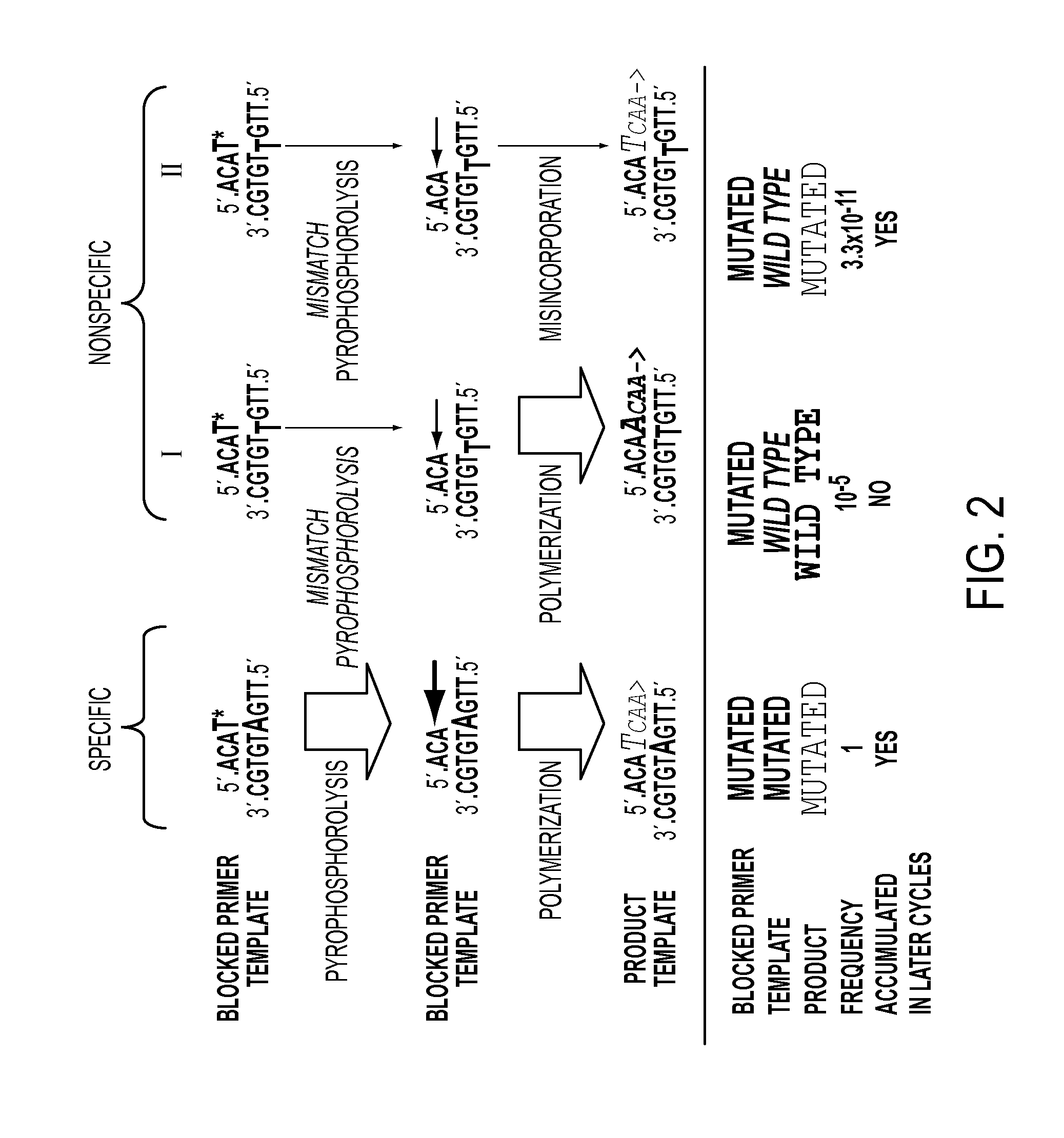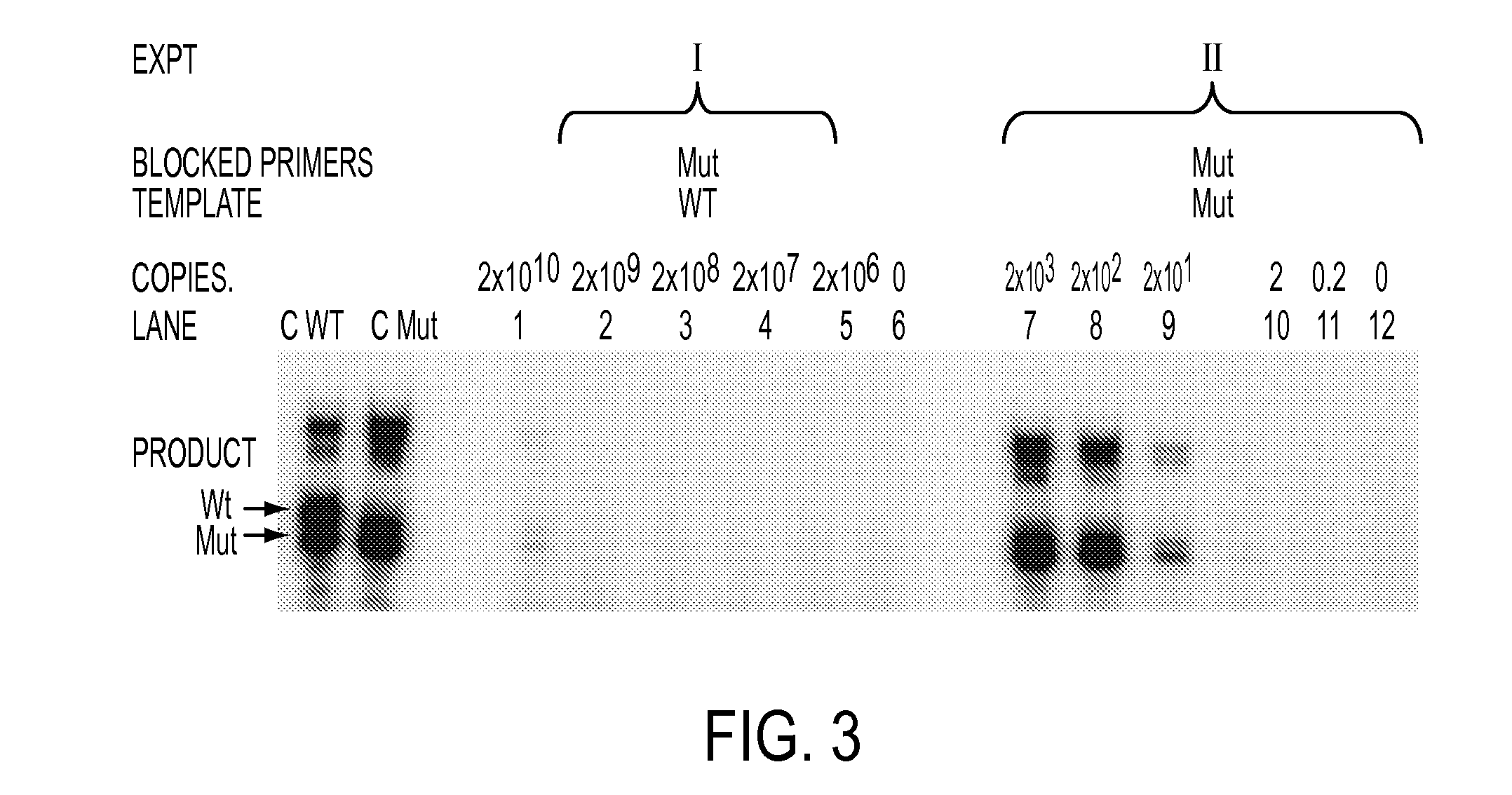Ultra-high sensitive monitoring of early transplantation failure
a monitoring method and high-sensitivity technology, applied in the field of organ transplantation, can solve the problems of transplant rejection, difficult detection early stage, destruction of foreign tissue, etc., and achieve the effect of reducing the cost of monitoring transplantation failur
- Summary
- Abstract
- Description
- Claims
- Application Information
AI Technical Summary
Benefits of technology
Problems solved by technology
Method used
Image
Examples
example 1
Materials and Methods
[0062]Separation of Plasma from Cells:
[0063]10 mL of peripheral blood was collected in an EDTA anticoagulation tube and then centrifuged at 1,300 RCF (2,500 rpm with CAT 218 swing rotor, Forma Scientific) for 10 min at 4° C. Remove plasma in the upper layer into 1.5 mL Eppendorf tubes. About 5 mL of plasma was collected from each EDTA tube. The white and red cells in the lower layer was re-suspended in PBS buffer.
[0064]Extraction of Plasma DNA for Tracking:
[0065]Plasma DNA was extracted using Qiamp MinElute Virus Spin Kit (Qiagen Cat 57704) according to manufacture's instruction. 1 mL of plasma was processed and 45 μL of plasma DNA was finally eluted to an 1.5 mL Eppedorf tube with an estimated recovery efficiency of 90%.
[0066]Two revisions were made to the standard protocol: 1) the elution buffer contains 10 mM Tris / HCl, pH 8.0, 0.1 mm EDTA for convenience in downstream treatment; and 2) the elution buffer was heated to 70° C. before its use for high recovery e...
example 2
[0076]A Two-Step Procedure of Screening and Tracking
[0077]In the first step for screening for donor-positive but recipient-negative markers, a set of common biallelic polymorphisms are compared between donor and recipient genomic DNA samples extracted from white blood cells or other tissue samples (FIG. 5). PAP assays or other methods may be applied.
[0078]In the second step, for tracking of a donor-positive but recipient-negative marker in recipient's blood, such as plasma DNA, a specific PAP assay is performed. Through detection of its presence or increased levels, transplantation failure can be identified at very early stages (FIG. 5).
example 3
Individual Assays Vs. Universal Assays
[0079]Individual assays mean that each individual pair of donor and recipient needs a specific assay for them selves. For example, we can identify HLA variances between the specific donor and recipient, and then develop an individualized PAP assay. The disadvantage is that this assay could not be used for others.
[0080]Universal assays mean that a set of assays can be applied for most, if not all, the donors and recipients. Common biallelic polymorphisms can be chosen for this purpose. Universal assays are preferred because of their broad utility and low cost.
PUM
| Property | Measurement | Unit |
|---|---|---|
| Fraction | aaaaa | aaaaa |
| Fraction | aaaaa | aaaaa |
| Fraction | aaaaa | aaaaa |
Abstract
Description
Claims
Application Information
 Login to View More
Login to View More - R&D
- Intellectual Property
- Life Sciences
- Materials
- Tech Scout
- Unparalleled Data Quality
- Higher Quality Content
- 60% Fewer Hallucinations
Browse by: Latest US Patents, China's latest patents, Technical Efficacy Thesaurus, Application Domain, Technology Topic, Popular Technical Reports.
© 2025 PatSnap. All rights reserved.Legal|Privacy policy|Modern Slavery Act Transparency Statement|Sitemap|About US| Contact US: help@patsnap.com



